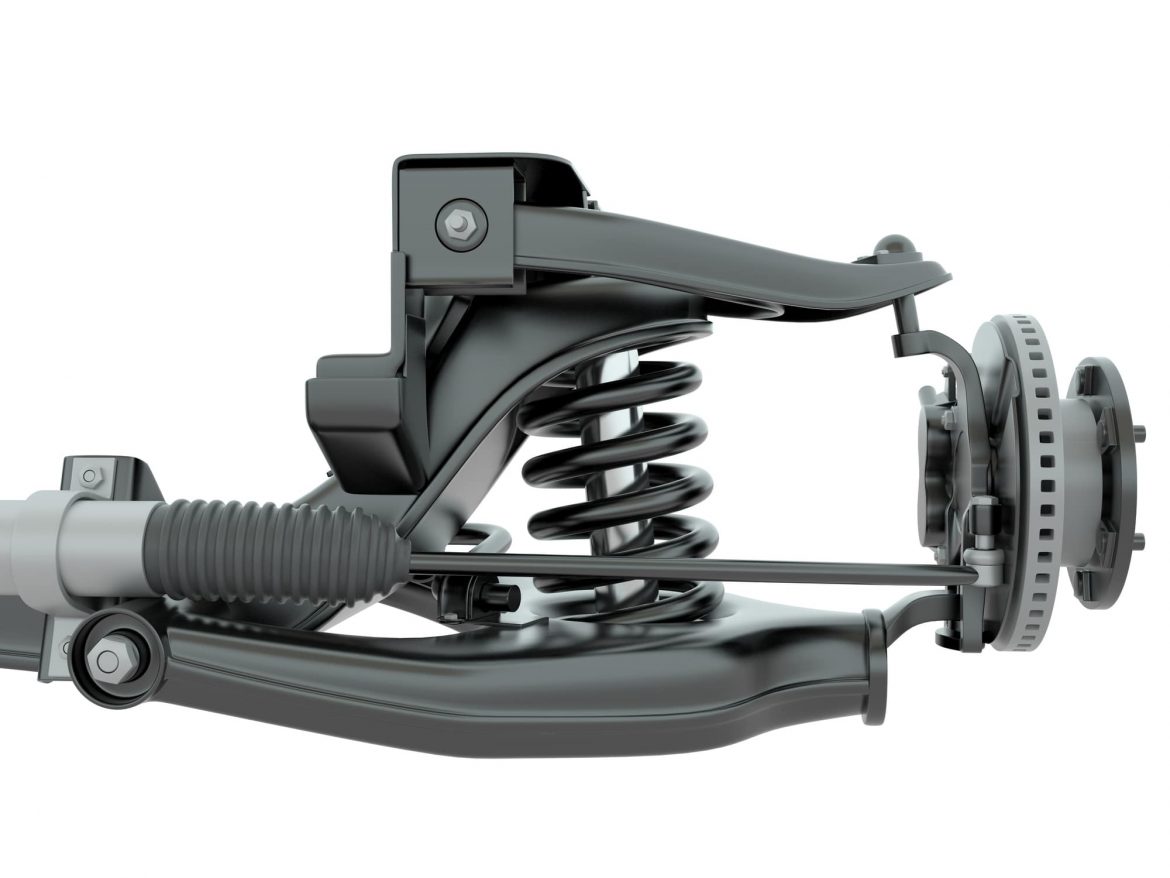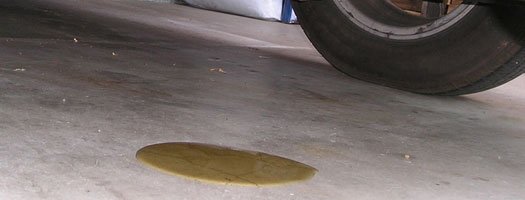Maybe the most common and potentially devastating automobile ailment is an oil leak. There may be problems that occur more frequently – like flat tires and busted windshields – but their consequences aren’t as severe. There are more catastrophic issues, like a blown engine, but they’re not as common.
It’s a little like a human getting an infection. Most infections are easily treated within a week or two. Once treated, the patient is 100% and can carry on with their life as usual. But left untreated, many infections can prove fatal. It’s much the same with an oil leak.
Oil lubricates and cools the metal parts of the engine that move against each other, like the pistons chugging up and down in their chambers. Without oil, metal scrapes against metal and eventually destroys the engine. If allowed to continue, it’s the end of the engine.
Consequently, anything that prevents oil from circulating and doing its job is a potential car-killer. Oil leaks must be prevented, and failing that, corrected.
Oil can leak from a number of places, including anyplace where two parts join together with a seal or gasket. These are the most likely culprits in an oil leak. But oil can also leak from the filter, the engine block, the oil pressure sensor and from the oil pan. Let’s focus on the last one.
What does an oil pan do?
The oil pan is one of the simpler parts of the car. It sits beneath the engine, attached by bolts and connected by an oil pan gasket, and serves as the reservoir for oil that circulates through the engine. A pump pulls oil from the pan to flow through a filter and out into the engine in a never-ending cycle. A baffle tray sits inside the pan to prevent oil from sloshing around and spilling.
The oil pan ordinarily holds four-to-six quarts of oil, with a drain plug at the bottom. This is the plug through which oil is emptied during an oil change. It is also one of the places from which oil may leak from an oil pan. Plugs that are over- or under-tightened can leak oil. The pan, which is exposed to the elements beneath the car, is susceptible to cracks and holes that lead to oil leaks, as is the gasket that attaches to the engine.
Symptoms of an oil leak
Several cues indicate an oil leak, but there is no sign the oil pan is the culprit. The two primary methods of determining oil is leaking are a stain on the ground beneath the car and a drop in oil level, usually indicated by a dashboard warning light.
A car employs many fluids to cool, lubricate, create hydraulic pressure and so on, so it helps to be able to distinguish the various fluids when they appear beneath it. For example, coolant is often orange or green and smells sweet. Gasoline is thin and smells like, well, gasoline, and usually leaks from the gas tank, which is in the back of the car. An oil leak is distinguishable by its color and viscosity – it is black or brown, usually thicker than other fluids, and had a rainbow-colored sheen.
In addition, oil can leak into the engine, which then burns it and produces blue smoke from under the hood. If the oil is leaking into the engine and mixing with gasoline or coolant, you might see bluish-gray smoke from the exhaust.
The worst kind of oil leak on a car
Regardless of the source, the worst kind of oil leak in a car is the one that is not addressed. It is possible to stave off the effects of an oil leak temporarily by adding oil periodically to replace what is leaking. This is a very stopgap measure since oil leaks tend to increase in intensity over time.
One easy way to repair an oil leak anywhere in the vehicle is with BlueDevil Oil Stop Leak, ranked best for performance by MechanicBase.com. Oil Stop Leak stops engine oil leaks by reconditioning seals and gaskets and filling leaking pinholes. Using this method for oil pan repair can avoid the significant cost of an oil pan replacement. A large hole in the oil pan caused by flying debris might be too large to respond to an oil pan sealer, so pay attention to the oil level following application of BlueDevil Oil Stop Leak.
Why is this important? Because if oil continues leaking it can have serious consequences for the engine. As oil runs low, the remaining oil works harder, heating up and thinning out, providing less lubrication and losing its cooling capacity. If the oil is allowed to run out completely, the engine’s metal parts would grind to a halt. At that point, you don’t need to replace the oil so much as the engine. Get out your wallet, because that will cost thousands, instead of a twenty-dollar bottle of Oil Stop Leak or a fifty-dollar oil change.
Once an oil leak is identified, the source of the leak must be determined. That is usually done by getting beneath the car and tracing the leak to its source. The oil pan, gasket, and drain are common enough offenders that any decent weekend mechanic would include those sites in the inspection. The problem might be solved by something as simple as tightening the drain plug, but it could also require the gasket or oil pan to be replaced. Barring damage from impact, oil pans last about a decade, so many drivers will end up replacing their pan at least once during their ownership of the car.
How much does it cost to replace an oil pan?
You might be surprised at how wide the variance is on an oil pan replacement cost. After-market oil pans, like those you might get online or at an auto parts store, generally range in price from $150 to $700, depending on the make and model. With labor to install the new oil pan adding another $200 – $400, that brings the total to $600 – $1,100 for most cars, and even more on high-end or limited-edition vehicles. The cost from the dealer is even higher and doesn’t offer any particular benefit except convenience. Replacing the oil pan means replacing the oil pan gasket, oil pan washer and oil pan drain plug as well, and most come with limited lifetime warranties, even when purchased after-market.
Can I replace an oil pan myself?
Of all the repairs you can make on a car, oil pan repair is among the easiest. If you have ever changed your own oil, you already know the basics. Doing so can save you $200 – $400, so it’s worth giving it a try.
Every vehicle is different, so read your manual, but this is a general outline of the steps to replace your oil pan and its accompanying parts.
- To ensure your safety, make sure the vehicle is cooled down and situated on a flat surface with the parking brake applied and the rear wheels chocked. Jack up the car and support it using jack stands. Disconnect the negative battery cable just to be extra safe.
- Find the oil drain and place a bucket or other receptacle beneath it. The receptacle must be able to hold four to six quarts of drained oil.
- With your face and body to the side of the drain plug, remove it and let the oil drain into your receptacle. Wait until it has completely stopped dripping before reinstalling the plug. Don’t tighten it too hard.
- NOTE: Read the owner’s manual before embarking on this step. Remove the bolts holding the pan, disconnect it from the hose that circulates the oil, and remove the pan. You may need to give it a not-so-gentle tap with a mallet or the back of a hammer to loosen it.
- Remove the oil pan gasket and scrap off the sludge from the engine. You may need to use a scraping tool or solvent to clean the area where the new gasket will be applied. It is important to get a tight fit with the gasket or else that could be a site of future leakage.
- Install the new gasket and attach the new oil pan to it. Then bolt the new pan to the underside of the engine.
- At this point, your new pan is attached but your car engine has no oil. Make sure the drain plug on the new pan is tight and secure, then refill the oil just as you would at the end of an oil change, pouring the proper amount of oil into the crankcase.
- Do a visual test to make sure you don’t have any leaking. If all systems are go, take the car off the jacks and reconnect the negative battery terminal. Start the engine and let it idle to circulate the oil, while watching for any leaks.
Congratulations, you have just slashed $200 – $400 off the oil pan repair cost.
BlueDevil Products can be found on Amazon.com or at AutoZone, Advance Auto Parts, O’Reilly Auto Parts, NAPA, and other major auto parts retailers.
Related Articles



